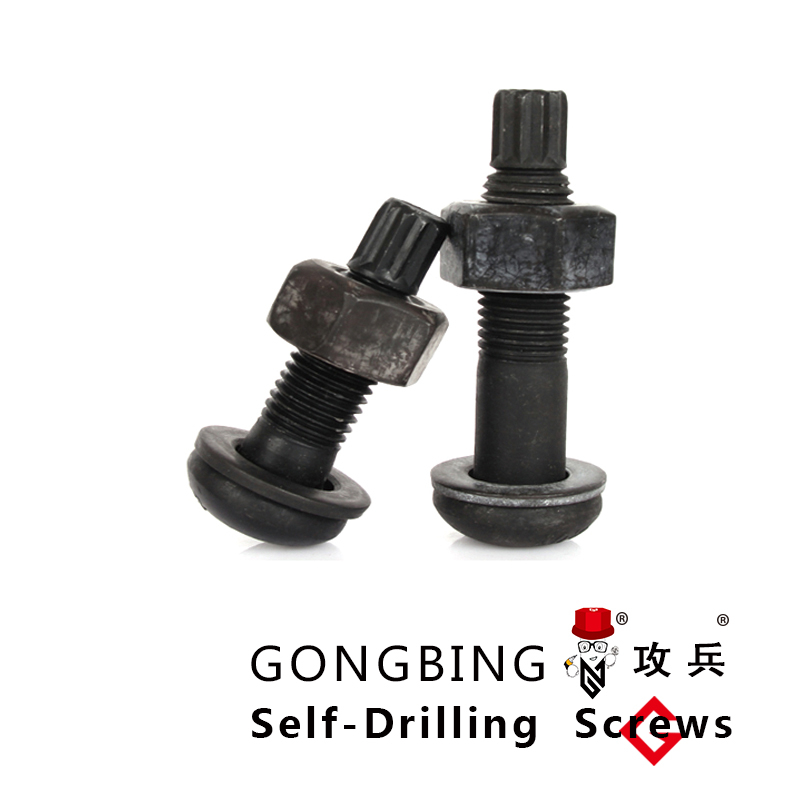expansion anchor bolts for concrete
Understanding Expansion Anchor Bolts for Concrete A Comprehensive Overview
Expansion anchor bolts are essential fastening devices used in construction to secure objects to concrete substrates. These robust anchors are particularly valued for their ability to withstand significant loads, making them ideal for a wide range of applications—from securing structural elements to installing fixtures and large machinery.
What is an Expansion Anchor Bolt?
An expansion anchor bolt is designed to provide a secure attachment point by expanding within a pre-drilled hole in concrete when the bolt is tightened. The design typically consists of a threaded shaft, a conical expansion mechanism, and a nut or washer. When the bolt is inserted into the drilled hole, tightening the nut causes the conical part to expand against the sides of the hole, creating a stronghold that can resist pull-out forces.
Types of Expansion Anchor Bolts
Several types of expansion anchor bolts are commonly used in the construction industry, each suited for specific applications
1. Wedge Anchors These are some of the most commonly used expansion anchors. They feature a wedge-shaped end that expands as the anchor is tightened. Wedge anchors are versatile and can support heavy loads, making them a go-to choice for many construction projects.
2. Sleeve Anchors Sleeve anchors consist of an outer sleeve that expands when the bolt is tightened, providing a secure grip in the concrete. They are ideal for use in medium-load applications and are easy to install.
3. Drop-In Anchors These anchors are inserted into a pre-drilled hole and require a setting tool to expand and secure them. Drop-in anchors are often used for attachments in hollow concrete walls or slabs.
4. Hammer Drive Anchors These are often used for lighter-duty applications where ease of installation is key. They are driven into the hole with a hammer, causing a sleeve around the anchor to expand against the concrete.
Installation Process
expansion anchor bolts for concrete

The installation of expansion anchor bolts requires careful attention to ensure optimal performance. The process generally includes the following steps
1. Drilling A precise hole is drilled into the concrete using a hammer drill, ensuring that the diameter and depth match the specifications of the anchor bolt.
2. Cleaning After drilling, it’s crucial to clean the hole of any dust or debris to allow for maximum contact between the anchor and the concrete.
3. Inserting the Anchor The anchor bolt is then inserted into the hole. The type of anchor will determine any specific requirements for this step.
4. Tightening Finally, the bolt is tightened, causing it to expand and anchor securely within the concrete.
Benefits of Using Expansion Anchor Bolts
Expansion anchor bolts offer numerous benefits
- High Load Capacity They can support heavy loads, making them suitable for structural applications. - Versatility Different types of expansion anchors can be used in various situations, from lightweight fixtures to heavy machinery. - Durability Made from materials resistant to corrosion and wear, expansion anchors can provide long-lasting performance.
Conclusion
In summary, expansion anchor bolts are vital components in construction, providing reliable and robust solutions for fastening to concrete. Their ability to withstand substantial loads and their versatility make them indispensable in modern building practices. Whether you are a contractor or a DIY enthusiast, understanding how to effectively utilize expansion anchor bolts can enhance the safety and durability of your projects.
-
Weatherproof Plastic Expansion Anchors for OutdoorخەۋەرلەرJun.06,2025
-
Sustainability in the Supply Chain: Eco-Friendly TEK Screws ProductionخەۋەرلەرJun.06,2025
-
Load-Bearing Capacity of External Insulation FixingsخەۋەرلەرJun.06,2025
-
Double Head Bolts: Enhancing Efficiency in Industrial MachineryخەۋەرلەرJun.06,2025
-
Corrosion Resistance in Chipboard Screws: Coatings for Wholesale DurabilityخەۋەرلەرJun.06,2025
-
Butterfly Toggle Bolts : Enhancing Structural ResilienceخەۋەرلەرJun.06,2025
